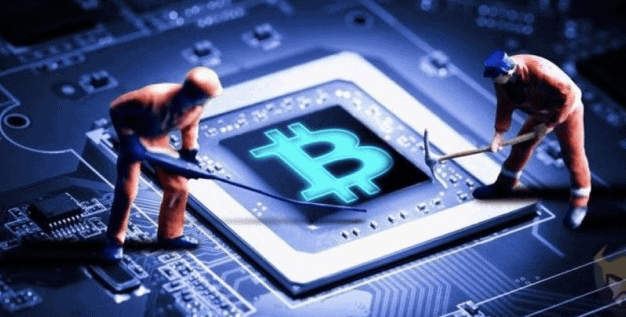Things You Need to Know About Cryptocurrency Mining
Cryptocurrencies are gradually becoming a global financial phenomenon. They’re now getting recognition at the institutional level. The institutes are now working on taking advantage of the mechanisms that work behind these cryptocurrencies. Crypto mining is an important aspect of the crypto world that is equally grabbing the attention of individuals and businesses.
What is Crypto Mining?
As the name suggests, crypto mining is a process of creating new crypto tokens. The crypto networks use a complex model to add new transactions to the blockchain. Miners from across the world participate in this process to validate the transactions. These participants receive the crypto tokens as a reward when a new block is created.
The users need to install expensive computer hardware to solve the complex mathematical puzzles that are required to validate the transactions. The process of validating the transactions to receive the rewards is called mining. And the participants that are involved in this process are called miners.
A blockchain is a distributed ledger that keeps a record of all transactions that are made over time. It consists of a set of blocks that keep a record of transactions. Bitcoin, Ethereum, Litecoin, and Bitcoin Cash are some of the popular blockchain networks that allow miners to earn passive income through mining.
However, Ethereum is now moving to a different consensus mechanism so those miners might have to move to a different platform.
How Does Crypto Mining Work?
Mining is a process of solving cryptographic puzzles where miners compete with each other to earn a reward by adding a new block to the blockchain.
Transaction Verification
When a user requests a transaction, it’s broadcast to the entire network of miners. Miners need to validate these transactions according to the rules of that particular network.
Creating a Block
The transactions are added to a block and the miners need to solve a cryptographic puzzle to add this new block to the network. The new block contains a reference to the previous block along with a set of transactions. Moreover, it also contains a special value called ‘nonce’.
Solving the Puzzle (Proof of Work)
The miners need to use computational power to solve the cryptographic puzzles. So, they need to spend a lot of time and energy to solve these puzzles.
Adding the Block to the Blockchain
The successful miner broadcasts the solution to the network. However, the solution isn’t considered valid unless other nodes verify it. Then, the reward is transferred to the miner who solved the puzzle.
Proof of Work vs Proof of Stake vs Proof of Authority
Proof of Work is the traditional mechanism that is used to add new blocks to the blockchain. However, it’s power-intensive and requires plenty of computational power. Proof of Stake was introduced as an alternative to PoW. It’s less power-intensive and the participants need to stake their crypto tokens to participate in this process.
Proof of Authority offers better speed and efficiency by reducing the need for computational power. However, the validators are approved by a central authority due to which this mechanism didn’t gain much attention.
Mining Hardware
In order to stay ahead of others, the miners need to use GPUs (Graphic Processing Units) and ASICs (Application-specific Integrated Circuits). GPUs can be used for a range of blockchain networks. However, ASICs are particularly used for Bitcoin.
Mining Software
The miners need to install the mining software on their mining hardware to join the mining process. It’s worth noting that the overall profitability is affected by the mining hardware and software.
Mining Pools vs Solo Mining

Solo Mining is the process where an individual tries to solve the cryptographic puzzles on his own. The miners need to validate a block alone to receive the rewards. Without any doubt, the reward is pretty high but the competition is so tough that the individuals barely get to validate the blocks.
On the other hand, mining pools are groups of miners where different miners combine their computational power to achieve this goal. It ultimately increases their chances of winning the reward. The reward is distributed among the pool members depending on the computational power they provide.
Solo Miners have the freedom to choose blocks according to their preferences. Whereas the pool miners have less control over block creation.
Tips for Choosing and Joining a Mining Pool
Both mining mechanisms have their own advantages and disadvantages. However, mining pools are an attractive option for those who need more predictable rewards. The miners need to look for a number of aspects when choosing a mining pool.
- Pool Reputation and Reliability – The pool needs to have a strong reputation with a history of consistent payouts.
- Mining Pool Fees – The miners need to make sure that the fee aligns with their profitability goals.
- Pool Size and Hashrate – The pool must offer a reasonable balance between rewards and frequency of block validations.
- Payment Mechanism – The pools use different payment methods like Proportional, Pay Per Share, PPLNS, and more. The miners need to choose a pool that offers their preferred type of method.
Risks in Crypto Mining
Although crypto mining is a safer option for making profits as compared to trading, it also comes with some security challenges.
- Malware and Hacking – Malicious software may expose the miner’s private keys and mining operations. Similarly, the hackers may steal the valuable data of miners who have their mining rigs connected to the internet.
- Phishing Attacks – Miners must educate themselves about phishing websites, emails, messages, and other phishing techniques. Otherwise, they may end up disclosing their sensitive information.
- Ponzi Schemes and Scams – The miners may also become a victim of fraudulent schemes like cloud mining services or investment opportunities.
- 51% Attacks – A group of miners may manipulate transactions or censor transactions if they manage to control 50% of the mining power of the network.
- Market Volatility – Although miners aren’t immediately affected by the fluctuating prices of cryptocurrencies, they may lose a huge portion of their profits due to market volatility.
Conclusion
Cryptocurrency mining stands as a pivotal process in the crypto world, fueling the creation of new tokens and transactions. As the landscape shifts toward energy-efficient consensus mechanisms and evolving hardware, miners face the choice between solo efforts and collaborative mining pools.
However, this opportunity is not without risks, necessitating vigilance against potential threats. Understanding the dynamics and adapting to changes is essential for those seeking to participate in this dynamic and ever-evolving domain.
Feel free to get in touch with us if you need more information about cryptocurrency mining. We also invite you to subscribe to our weekly newsletter if you need regular updates about Bitcoin and the crypto market.



